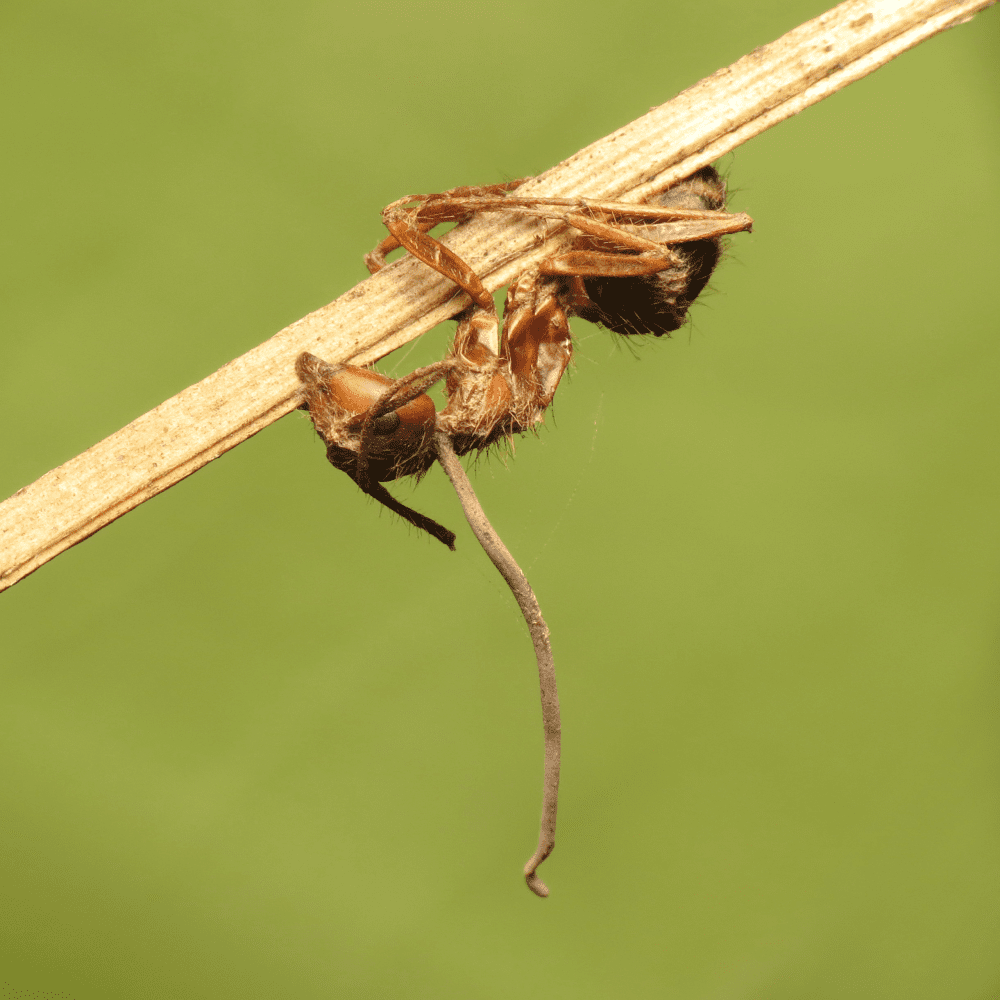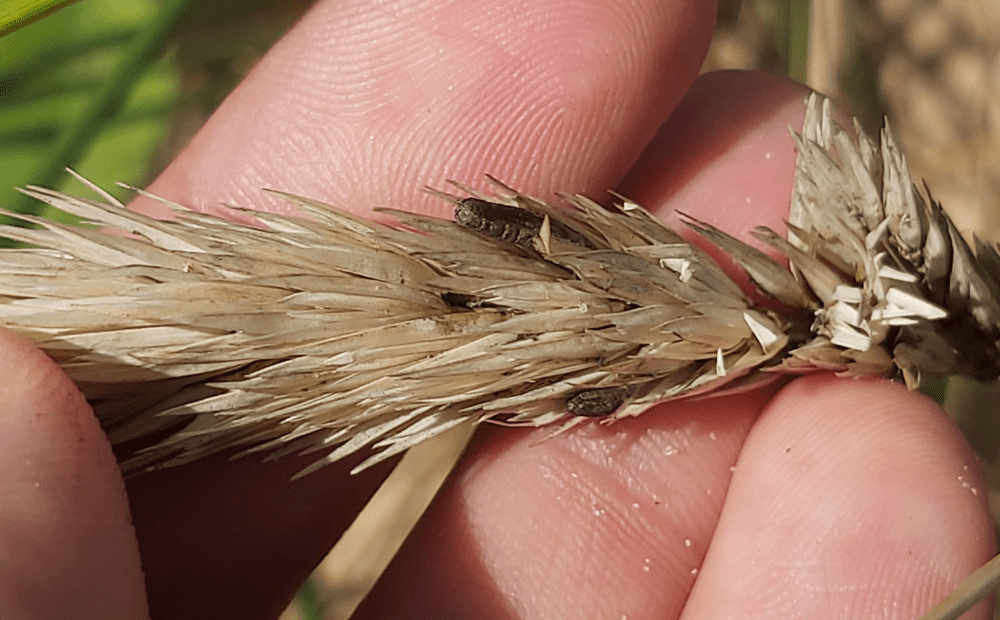The zombie fungus has exploded out of the parasitized corpses of insects and into the world of media, having now spread its spores from gaming into television as it got the HBO treatment in The Last Of Us, which launched yesterday. The original game of the same name was inspired by none other than Sir David Attenborough, as his 2006 Planet Earth series brought the horrifying reality of Ophiocordyceps to the attention of directors Bruce Straley and Neil Druckmann.
That’s right, The Last Of Us pandemic is based on a real fungus.
Ophiocordyceps is known as the zombie fungus because of the way it infects and controls its host as a parasitic fungus. Once inside, the body-snatching fungus starts to invade areas like the nervous system and actually influences its host’s behavior. Often this involves climbing to the most catastrophic vantage point, from which Ophiocordyceps’ fruiting body explodes out of the “zombie’s” body and spreads its spores.
The goal of the zombie fungus is essentially to infect as many hosts as possible, so it peppers its spores across the forest floor where it can attach to other organisms, who will carry it on as did their predecessor. This is why infected insects are often found clamped onto twigs and branches high off the ground where the fungus has the most reach.

You may have heard of the zombie fungus being more generally referred to as Cordyceps, and for a long time this was the scientific understanding; but as time has gone on, we’ve increased our understanding of the different genera and species of body-snatching fungi and the specific hosts they parasitize, so they are now classified as Ophiocordyceps.
The series introduction does a decent job of explaining why, to date, humans haven’t had much to fear from Ophiocordyceps. This specific group of fungi don’t do well with body temperature, which is why they’re fond of ectotherms like insects.
“But what if that were to change?” Dr Newman, played by The Mummy’s John Hannah, posits in the opening sequence to the HBO series. “What if, for instance, the world was to get slightly warmer? Well, now there is reason to evolve.”
It’s a harrowing concept as a potential host living on an ever-warming planet, but is it feasible? The first example of a new fungal disease emerging from climate change was suggested in a report about the rise of Candida auris on three continents.

C. auris became one of just a few hundred fungi capable of infecting humans, something that’s hard to do through a combined effect of our immune systems (when they’re working properly) and our high basal body temperature. For it to have been successful in infecting humans on multiple continents would suggest that C. auris overcame one of fungi’s two key weaknesses: immune response and temperature.
Were its transition into a human threat made possible due to adapting tolerance to heat, one feasible route of transmission may have been it making the shift from an environmental fungus to one that can infect an avian host. The thermal tolerance needed to infect birds is lower than that for humans, so theoretically they may have acted like mobile training grounds that flew the pathogen across the planet until it was thermally tolerant enough to move on to the cooler parts of mammalian hosts, like the human ear where it was first identified (another reason why you shouldn’t hug pet birds when they’re sick).
Infection with C. auris can range from being asymptomatic to a potentially fatal illness characterized by fever, chills and pain. Not quite the zombie fate of The Last Of Us’s Clickers, then, but we’re not short on fungi with mind-altering powers.
The Salem Witch Trials’ accused may have fallen victim to moldy bread infected with the fungus Claviceps purpurea, which can cause convulsive ergotism. Its symptoms include violent seizures that can last for hours, as well as mania, psychosis, and hallucinations, which – at a time when superstitions were rife – may have led the people of Salem to suspect witchcraft.

So, theoretically, were you to combine the suggested climate-proofing of Candida auris, with the body-snatching of Ophiocordyceps and the mind-altering powers of Claviceps purpurea, then it might be possible that a fungal pandemic could give rise to oddly behaving humans who had become unwilling facilitators of spore dispersal. However, the more realistic threat is the one fungus poses to our food supply.
As for how intimidating a pandemic that might be, that depends on the mode of transmission and longevity of the zombies. In The Last Of Us, the Clickers eventually complete as a haunting but – in their defence – quite beautiful splat of mushrooman on the wall.

Nothing throws a fungal infection into sharp relief quite like having Pedro Pascal come and stand next to you. Image credit: Liane Hentscher/HBO
How long you might have to wait it out could simply be a case of waiting for the infected to fall apart, which coincidentally is something we discussed with The Institute Of Human Anatomy in our January issue of CURIOUS, IFLScience’s free e-magazine.
Anatomists Justin Cottle and Jonathan Bennion were heading to a frozen fortress with the hopes of creating brittle, immobile zombies who would be easy to escape. This might not be the best strategy in the case of a fungal zombie apocalypse, however, as there are psychrophilic and psychrotrophic fungi that can grow at freezing temperatures both out in the Arctic, Antarctic, and even in the bad of your fridge-freezer.

A grim prospect, but one Cottle was morbidly fascinated by.
“The Last Of Us is an interesting one. We’re talking about the [Ophiocordyceps] fungus which is an entirely different type of zombie, because technically I don’t know if it counts because they’re living, right? It’s kind of like a living corpse, but I think that’s just fascinating.”
“I don’t want to be in that universe, though. If we’re talking about things I find intellectually interesting vs. what I would rather be in? I would choose George A Romero-type zombies, like back in the 70s. I want my zombies slow and very, very cognitively incapable, but I think the zombies from The Last Of Us are by far the coolest.”
The adaptation has so far done them justice with episode one proving promising, even if it did miss out a few key features of the game.
Catch The Last Of Us weekly on HBO.
Source Link: "The Last Of Us" Fungus Is Real, Could It Cause A Pandemic?